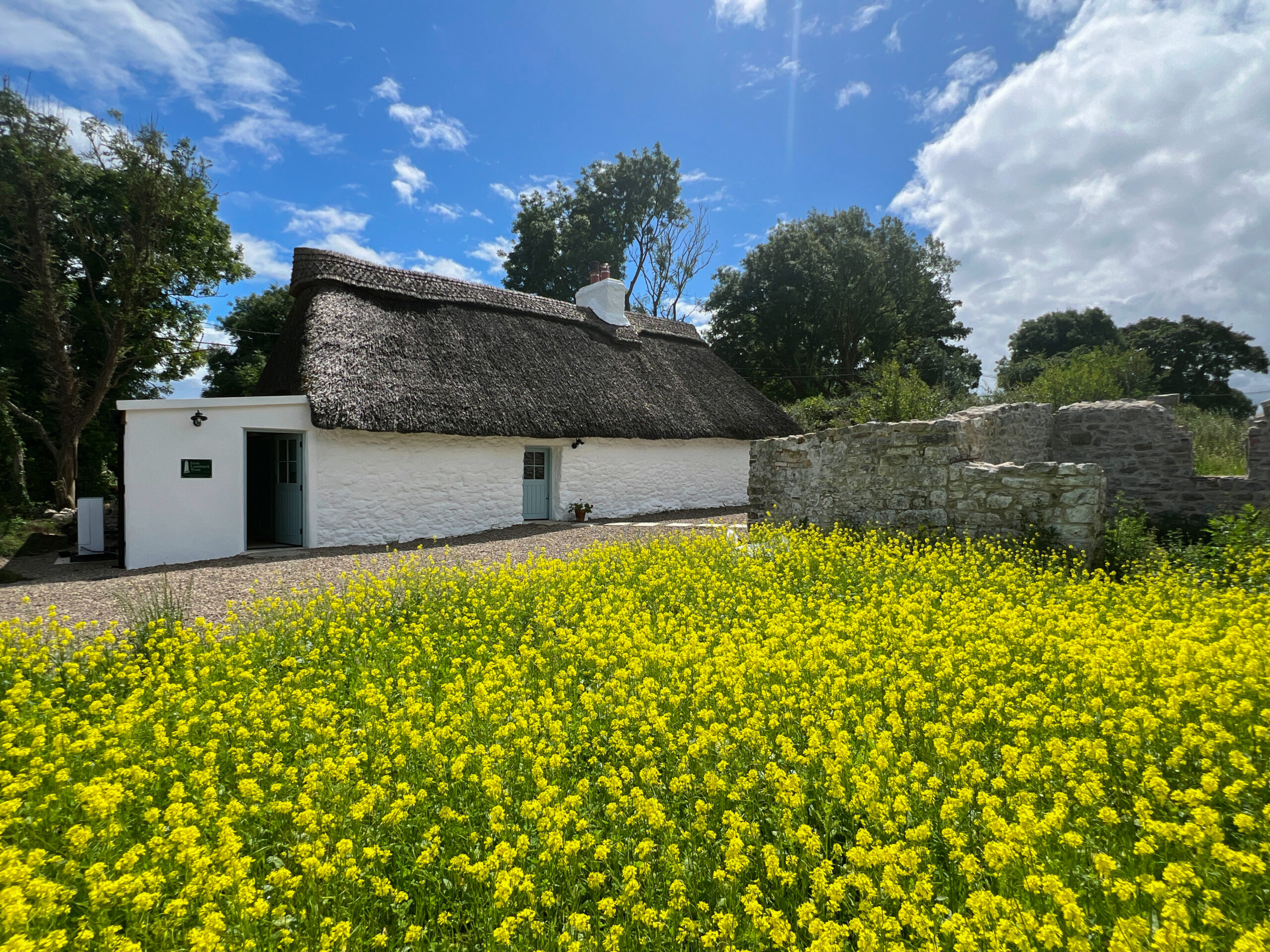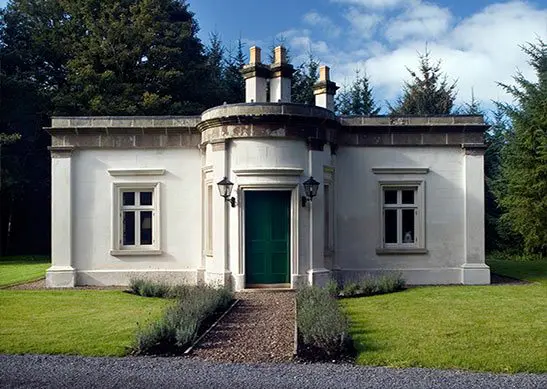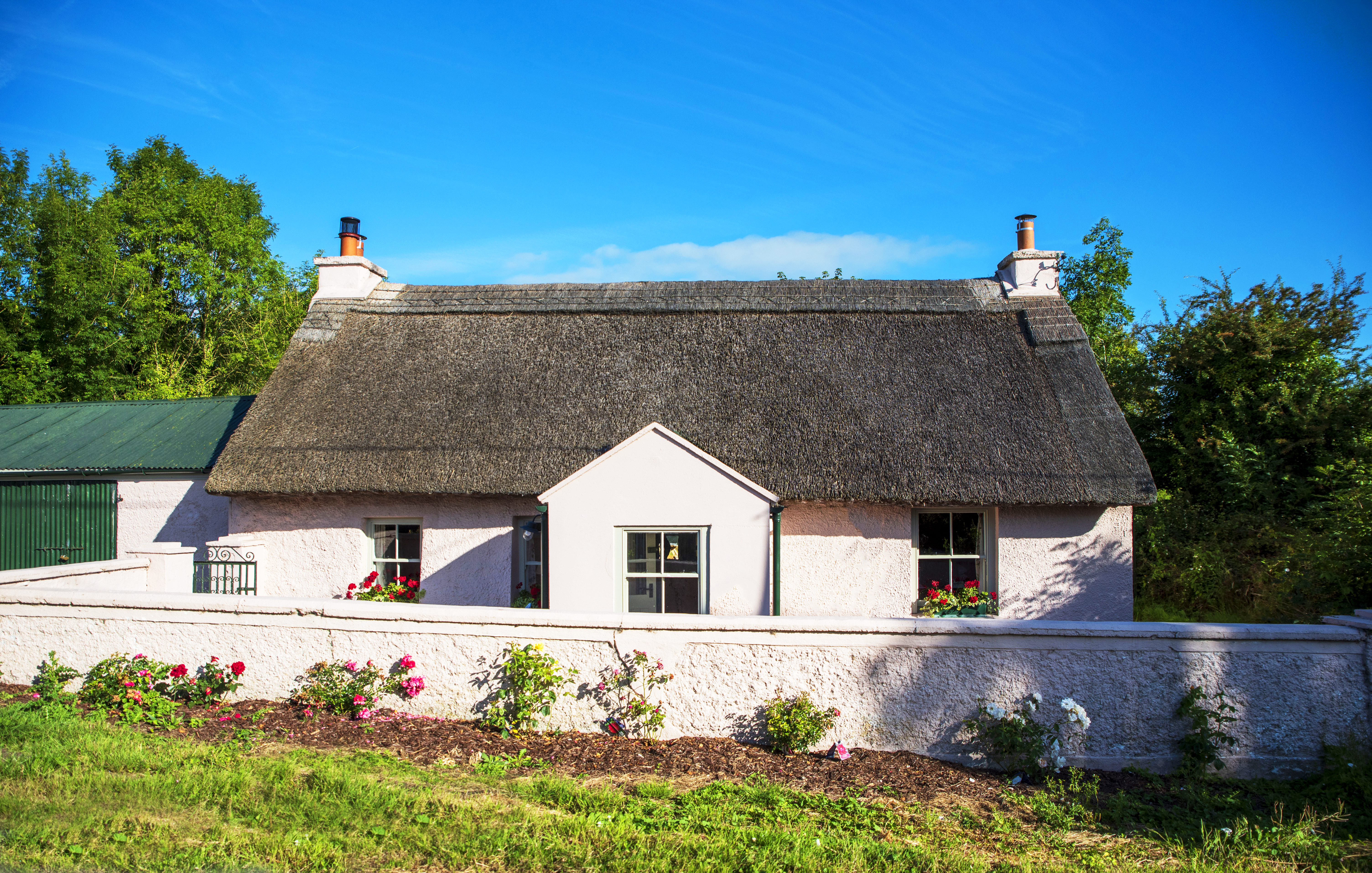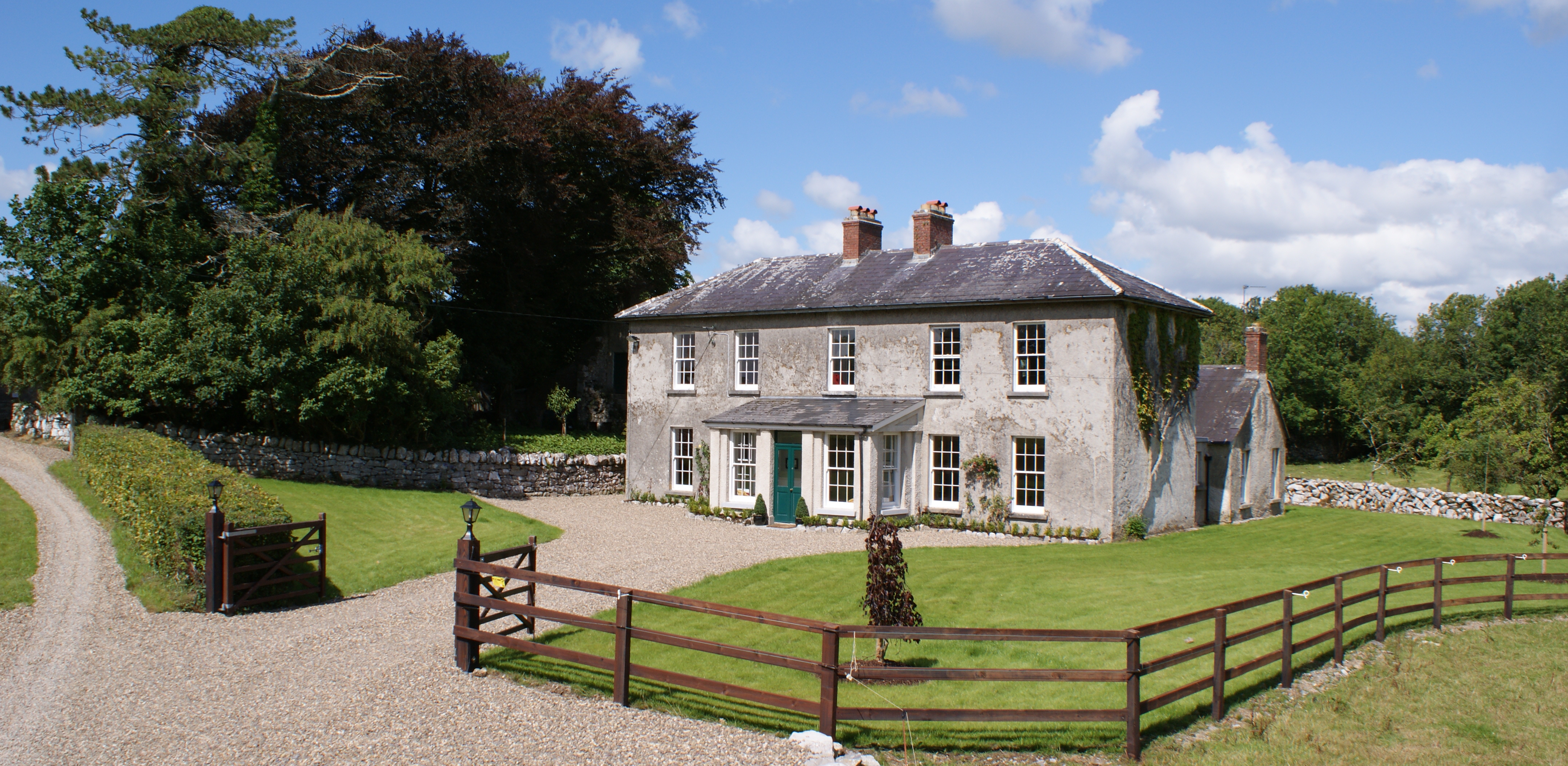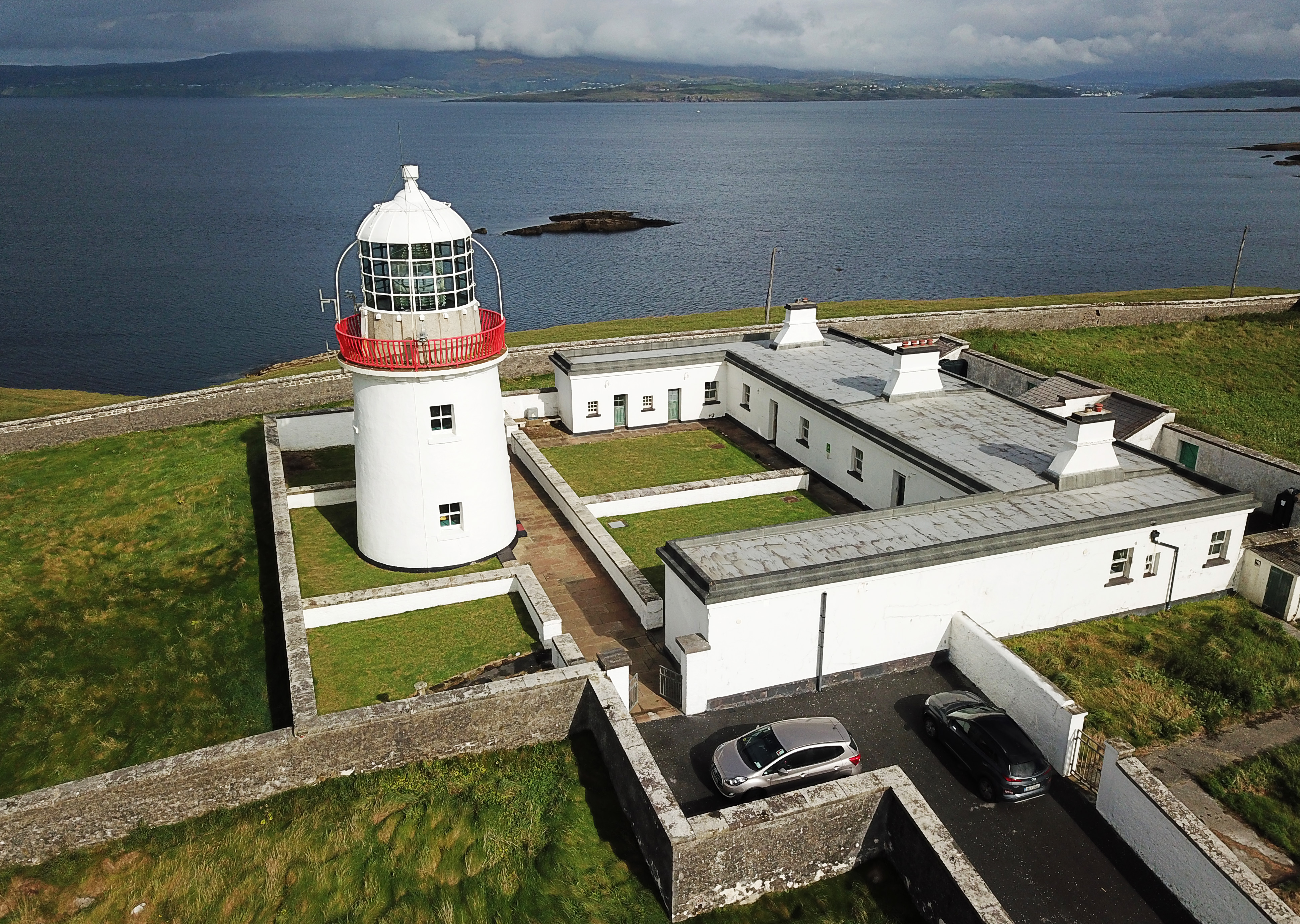Issues
Gatelodges like many late 19th century buildings achieve a certain amount of natural ventilation by virtue of their construction, through sliding sash windows, patio doors etc. Witnessing a deterioration of the internal plaster, we noted that the traditional culprits of rising damp, high ground levels and leaking pipes and defective gutters were all absent in this instance.
- Magherintemple’s specific circumstances combined to accentuate issues in regard to poor air quality creating good conditions for damp. Completion of conservation work in May 2012 saw a considerable amount of water vapour still within the construction, coupled with 128 days or rain in the winter of 2011 plus the need to have Magherintemple ready for the 2012 holiday season left precious little time for drying out.
- Magherintemple had been newly restored with new lime plaster throughout which together with the installation of new solid floor construction in concrete created very considerable levels of moisture in the fabric of the building which needed to dry out ideally by natural means at a controlled rate.
- At Magherintemple in its new function as lettable holiday accommodation we did not have the benefit of full time use by a family where there would have been regular ventilation through the normal coming and going of family living.
- The listed status of Magherintemple gatelodge prevented the inclusion of trickle vents into either the new or existing sliding sash windows and that coupled with a central hallway which had no external walls produced a dead space within the gatelodge where air circulation was at a minimum.
Intervention
Increased periods of heating helped, the extract fans that had been fitted within the new bathroom and kitchen were useful but could not adequately ventilate the building and provide the requisite number of air changes. Likewise attempts by the contractor and the housekeeper to leave doors and windows open had limited success.
- The subsequent appearance of damp spots on internal plastered walls particularly around the central hallway coupled with high moisture readings was a clear indication that greater intervention was required to combat the growing issue of damp and stagnant air. Clearly a regular and adequate level of ventilation was required but without the need to go to a full MVHR system (mechanical ventilation and heat recovery).
- The occupancy of the gatelodge at Magherintemple on an irregular basis resulted in an absence of controlled ventilation. The three spaces within Magherintemple which suffered most were the two ground floor bedrooms and the central hallway so a single point ventilation system supplying fresh air to the central hallway would not address the need for air movement through the two bedrooms. Eventually we identified a system that would deliver fresh air to all three problem areas using multiple input ventilation.
- MIV Units (Multiple Input Ventilation) deliver all year round fresh, filtered & clean air into the gate lodge at a continuous rate. Moisture laden air is diluted, displaced and replaced to control humidity levels this in turn reduces surface condensation, the main cause of mould. The MIV unit also takes advantage of solar gain in the roofspace and because humid air is displaced without opening windows it offers useful energy saving in addition to a higher quality of ventilation. Finally it is of benefit to asthma sufferers by reducing dust mites and mould spores.
 Gatelodges like many late 19th century buildings achieve a certain amount of natural ventilation by virtue of their construction, through sliding sash windows, patio doors etc. Witnessing a deterioration of the internal plaster, we noted that the traditional culprits of rising damp, high ground levels and leaking pipes and defective gutters were all absent in this instance.
Gatelodges like many late 19th century buildings achieve a certain amount of natural ventilation by virtue of their construction, through sliding sash windows, patio doors etc. Witnessing a deterioration of the internal plaster, we noted that the traditional culprits of rising damp, high ground levels and leaking pipes and defective gutters were all absent in this instance. Increased periods of heating helped, the extract fans that had been fitted within the new bathroom and kitchen were useful but could not adequately ventilate the building and provide the requisite number of air changes. Likewise attempts by the contractor and the housekeeper to leave doors and windows open had limited success.
Increased periods of heating helped, the extract fans that had been fitted within the new bathroom and kitchen were useful but could not adequately ventilate the building and provide the requisite number of air changes. Likewise attempts by the contractor and the housekeeper to leave doors and windows open had limited success.
